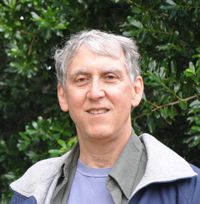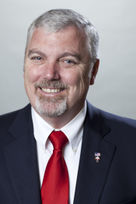Development of SEBoK v. 1.1
This minor update was released in April 2013. It updated many topic articles and glossary articles. Changes included:
- Fourteen topic articles were updated in Parts 1, 2, 3, and 6, for the purpose of expanding or improving the explanation of the topic, or in some cases to add new references.
- Sixteen glossary terms were updated and two new glossary terms were added.
- The Acknowledgements page was updated to reflect the significantly revised governance structure for the SEBoK, which added many new contributors in varying roles.
- The Main Page and other Quicklinks pages were modified to reflect the new version.
- The SEBoK Evolution article formerly in SEBoK v. 1.1 Introduction was deleted, being replaced by an updated version, being this Editor's Note article.
Micro updates of SEBoK v. 1.1 are described below. The authors and Editors who contributed directly to these versions are outlined below.
SEBoK Version 1.1.1
This micro update was released in June 2013. It was primarily focused on updates to the wiki structure and features. Changes included:
- Version numbers were removed from page titles to improve maintenance of links.
- Corrections were made to the Acknowledgements.
- The 'Cite This Page' feature was revised and improved.
- A few references were updated, notably in the Safety Engineering article.
- Meta-tags were improved to increase visibility to search engines.
- Wiki navigational features - especially breadcrumbs - were improved.
- A counter was added to record PDF downloads.
SEBoK Version 1.1.2
This micro updated was released in August 2013. It primarily focuses on updates to the wiki structure and features, including:
- Version numbers were removed from page titles to improve maintenance of links
- To reflect the governance of the SEBoK and oversight through the Editorial Board, a new page was added called Meet the Editors.
- A few references have been updated, notably in the Safety Engineering article.
The most significant change for this release was not to SEBoK v. 1.1.2 itself, but the release of a companion wiki, the SEBoK Sandbox, which provided new collaborative opportunities to the community. In the Sandbox, members of the community could edit or comment on existing SEBoK articles as well as request the creation of new SEBoK articles. The Sandbox is overseen by the Editorial Board. For more information, please visit the Sandbox.
SEBoK v. 1.1 Authors
Authoring for v. 1.1 was done by the Editorial Board.
SEBoK v. 1.1 Editorial Board
SEBoK v. 1.0 was developed using an author team model. SEBoK v. 1.1 was the first version which was built using the Editorial Board model. The Editor in Chief and Co-Editor in Chief and the Associate Editors for SEBoK v. 1.1 are listed in the Tables 1 and 2, respectively, below. The Editorial Board was supported by Assistant Editors, who are listed in Table 3, below.
| BKCASE Editors in Chief | |
|---|---|
|
Editor in Chief Art Pyster Stevens Institute of Technology (US) |
Co-Editor in Chief David H. Olwell Naval Postgraduate School (US) |
| BKCASE Associate Editors | |
|---|---|
| Richard Adcock
Cranfield University and INCOSE UK (UK) Responsible for the Systems Fundamentals, Systems Science, Systems Thinking, and Systems Approach Applied to Engineered Systems knowledge areas in Part 2: Systems along with Cihan Dagli. |
Michael Henshaw
Loughborough University (UK) Responsible for Product Systems Engineering, Enterprise Systems Engineering, and System of Systems Engineering in Part 4: Applications of Systems Engineering with Judith Dahmann. |
| Barry Boehm
University of Southern California (US) Responsible for the Systems Engineering Management knowledge area with Greg Parnell and Life Cycle Models knowledge area; both are in Part 3: Systems Engineering and Management. |
Chris Paredis
Georgia Institute of Technology (US) Responsible for working across the SEBoK adding material on the theoretical underpinnings of systems engineering, including mathematical foundations. |
| Cihan Dagli
Missouri University of Science & Technology (US) Responsible for the Systems Fundamentals, Systems Science, Systems Thinking, and Systems Approach Applied to Engineered Systems knowledge areas in Part 2: Systems along with Rick Adcock. |
Gregory Parnell
University of Arkansas (US) Responsible for the Representing Systems with Models knowledge area with Dov Dori in Part 2: Systems and Systems Engineering and Management with Barry Boehm in Part 3: Systems Engineering and Management. |
| Judith Dahmann
MITRE Corporation (US) Responsible for Product Systems Engineering, Enterprise Systems Engineering, and System of Systems Engineering in Part 4: Applications of Systems Engineering with Mike Henshaw. |
Garry Roedler
Lockheed Martin (US) Responsible for the Concept Definition and System Definition knowledge areas in Part 3: Systems Engineering and Management. |
| Heidi Davidz
Aerojet Rocketdyne (US) Responsible for the Enabling Individuals knowledge area with Tim Ferris and the Enabling Teams knowledge area in Part 5: Enabling Systems Engineering. |
Samuel Seymour
Johns Hopkins University Applied Physics Lab (APL) (US) Responsible for the Service Systems Engineering knowledge area in Part 4: Applications of Systems Engineering. |
| Dov Dori
Technion Israel Institute of Technology (Israel) Responsible for the Representing Systems with Models knowledge area with Greg Parnell. Dov is also developing a new article on Model-Based Systems Engineering. |
Ariela Sofer
George Mason University (US) Responsible for Part 1, including an overview of systems engineering and an overview of the SEBoK. |
| Timothy Ferris
University of South Australia (Australia) Responsible for the Enabling Individuals knowledge area in Part 5: Enabling Systems Engineering with Heidi Davidz. Tim is also developing a new article on Systems Engineering Education. |
Ricardo Valerdi
University of Arizona (US) Responsible for the System Realization knowledge area in Part 3: Systems Engineering and Management. Ricardo is also developing a new article on Systems Engineering References. |
| BKCASE Assistant Editors | |
|---|---|
| Stephanie Enck
Naval Postgraduate School |
Nicole Hutchison
Stevens Institute of Technology |
| Devanandham Henry
Stevens Institute of Technology |
|
Technical Editors
Every article went through rounds of technical editing to improve writing quality and consistency. Thanks go to:
- Emily Leach
- Abraham Raher

